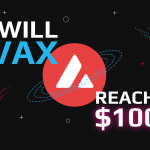You see tokens with the phrase “wrapped” in front of them all over the crypto market, such as Wrapped Bitcoin (WBTC) and Wrapped Ether (WETH). But what is a wrapped token? We’ll go over what wrapped tokens are and how they function in this article.
What Is A Wrapped Token?
The following is a pertinent wrapped token definition:
Wrapped tokens are cryptocurrencies that have been “clothed” in order to run on various blockchains.
For instance, wrapped Bitcoin is a clone of Bitcoin that may be used on several blockchains. Similarly, Wrapped Ether is a clone of Ether that can be used on various blockchains. A wrapped token is also referred to as an ERC-20 token, which means it represents another token as well as a protocol for releasing such tokens in the same way. Wrapped Tokens were created in response to some decentralized apps (dApps) on the Ethereum network that were incompatible with Ether. As a result, people can transform their ETH into ERC-20 tokens using wrapping tokens.
Wrapped Tokens And DeFi
Wrapped tokens provide a number of advantages, including increased interoperability across non-compatible cryptocurrencies and blockchains, which allows for things like bitcoin lending and ether borrowing on DeFi systems. This increases the utility of crypto assets by providing more liquidity to decentralized services.

What Is Wrapped Bitcoin?
Wrapped Bitcoin (wBTC), an ERC-20 variant of bitcoin, is the most common wrapped token. Wrapped bitcoin is useful as it enables bitcoin owners to plug their asset — or, rather, a synthetic asset with the same exposure to the price of bitcoin — into Ethereum’s decentralized finance (DeFi) protocols. This opens up the possibility of turning bitcoin into a yield-bearing investment, one that may earn returns from things like Uniswap’s or Yearn Finance’s liquidity pools, for example.
Difference Between Bitcoin And wBitcoin
Bitcoin is a traditional cryptocurrency that is based on blockchain technology. A decentralized ledger is used to store transactions that are not controlled by a single centralized entity. Wrapped Bitcoin is distinct from BTC. It’s a completely specific type of cryptocurrency; however, it does have a value that is related to the value of Bitcoin. WBTC is an ERC-20 Ethereum token. It means the platform is connected to the realm of decentralized apps and smart contracts that are kept digitally. WBTC has a 1:1 backing with BTC at all times. The Ethereum network has grown in popularity, and the WBTC cryptocurrency wants to capitalize on its advantages. WBTC brings BTC to an allegedly more capable blockchain network with this.
How to Buy wBTC?
wBTC can be purchased from many marketplaces; however, you may discover that buying it, or any other cryptocurrency, through a reputable global exchange, Swapzone, is the most convenient option. Swapzone is a well-known trading site and a non-custodial bitcoin exchange aggregator that continuously monitors the best exchange rates for thousands of cryptocurrency pairings. Buying wBTC on Swapzone could be a great idea, especially if you can do so at a reasonable price. Following these steps, you may easily get wBTC on Swapzone utilizing a wide range of immediate cryptocurrency exchange providers:
- In the “Get Up To” section, choose wBTC.
- Fill in the amount you’d like to receive.
- In the “Send” section, select the cryptocurrency you’d like to swap for wBTC.
- To proceed, choose an exchange offer.
- To receive your swapped cryptocurrency, enter your wallet address.
- Send your money to a randomly created address.
- You’ve received your wBTC!
- Take a minute to review the exchange platform that facilitated your conversion.

What Is Wrapped Ethereum?
Wrapped bitcoin isn’t the only token that can be beneficial. Wrapped Ether (wETH), introduced by 0x labs in 2017, is another well-known wrapped token. Unlike wBTC, which is solely dedicated to porting bitcoin to non-native blockchains (currently Ethereum and Tron), wETH allows users to trade synthetic Ether directly on the Ethereum blockchain. This is due to the fact that wETH turns Ether (ETH) into an ERC-20 token, which is a tradable version of ETH that adheres to decentralized financial standards. The Ethereum native token, ETH, does not follow the ERC-20 standard.

What Is Wrapped Luna Token?
Wrapped LUNA, also known as WLUNA, is an Ethereum Token that represents Terra (LUNA) on the renowned Ethereum network. However, it is a different ERC token, not LUNA, that is designed to track the value of LUNA.
Is Wrapped LUNA The Same As LUNA?
LUNA and WLUNA (wrapped LUNA) are interchangeable and have the same value. Wrapped LUNA (WLUNA) is an ERC20 token that is used to represent LUNA on the Ethereum network. On the other hand, LUNA is a Terra token, while wrapped LUNA (WLUNA) is an ERC20 token that is used to portray LUNA on the Ethereum network. The Terra network is a different blockchain network from the Ethereum (ERC20) system, and LUNA is native to it. As a result, native LUNA is incompatible with ERC20; hence you won’t be able to deposit native LUNA to an ERC20 address. This is analogous to how the Bitcoin network is inconsistent with the ERC20 network, preventing BTC from being added to Metamask wallets. However, wrapped LUNA is an ERC20 representation of LUNA that can be added to Metamask.

How To Create A Wrapped Token?
The user, the seller, and the custodian are all involved in the generation of wrapped tokens. A user requires the tokens, a merchant distributes the wrapped token, and a custodian retains the underlying assets and mints the wrapped tokens. Let’s go over the WBTC wrapped token creation process.
- The customer will contact the merchant to express his interest in the WBTC.
- The merchant will contact the custodian once more to request the minting of WBTC.
- Once the custodian receives an equivalent in Bitcoin from the merchant, the WBTC will be sent to his Ethereum wallet address. The merchant may be required to go through their KYC and AML procedures during this process.
- Finally, users and merchants can trade BTC and WBTC on various crypto exchanges.
A token can also be unwrapped or redeemed. To unwrap a token, the merchant must submit a burn request to the custodian, who will then release the necessary BTC.


